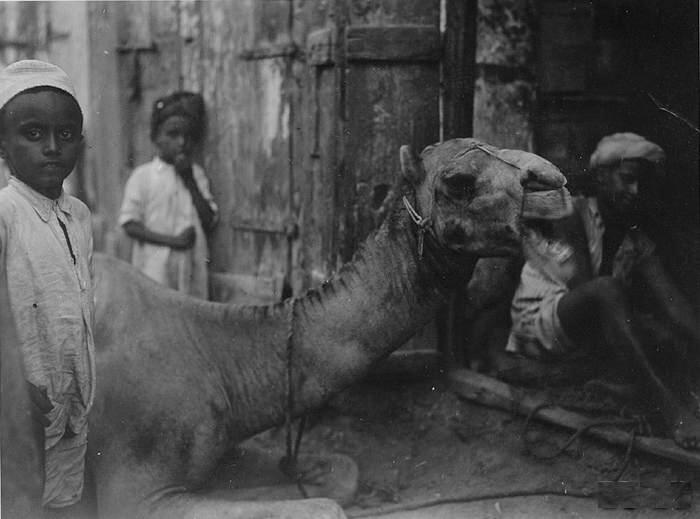
Yemeni Economics

Figure 1.--This photograph was taken by a German traveler in Aden during the 1930s. It could have been taken a mellinum ago, do little has changhed in the country. Aden was an important port and British naval base at the time. The population including the children wore traditional Arab clothing.
|
|
Despite being located on important world trade routes, Yemen is a very conservative part of the Arab world with few modern influences. Yemnis played an important role in the Arab trading that pre-dated the European outreach (15th century). Many Indonesians are of Arab (especially Yemeni) origins. Yemen is the poorest nation on the Arabian Peninsula despite its location on important trade routes. The reason of course is that there is onluy a small oil resource. Nearly half the country (45 percent) live below the poverty line. The per capita GDP is only about $600 annually (2006). [World Bank] This is one of the lowest levels in the world and with thec rise of Islamic fundamentalism is not likely to change in the near future. This is the general pattern for conservative Arab socuties unless they have a significant oil resource. A major factor in Yemeni poverty is gender inequality. Many Yemenis do not believe in sending their girls to school. An estimate 30 percent of teenage girls (between 15 and 19 years of age) are married with children and have not attended schools. Many have not attended schools beyond a few years of primaey school. Some have no dchooling at all. Males are also poorly educated. Most have no skills needed by a modern economy. Traveling around Yemen one sees sights that could easily have been taken centurues ago so little has changed. Unemployment is thus very high, about 35 percent. The economy is largely agricultural, although the climate is arid. There are fertile regions in Yemen, in cotrast to the more arid areas to the north. Major crops are fruits, grains, coffe, and qat. Incomes levels are very low. There are virtuslly no modern indudtries. Yemen has attracted the interest of Western tourists interested in exotic locations. Tourism in Yemen, however, can be an adventure. And foreigners especially Westeners in Yemen's tribal society can become targets. Groups have kidnapped Westerners in an effort to gain concessions from the Government. Yemen imports food, livestock and machinery. It exports crude oil, qat, coffee, and seafood. The current spike in oil prices may help alleviate Yemen's economic distress.
Source
World Bank.
HBC

Navigate the Boys' Historical Clothing Web Site:
[Return to the Main Yemeni page]
[Return to the Main Middle Eastern page]
[Return to the Main Middle Eastern econoics page]
[Introduction]
[Activities]
[Biographies]
[Chronology]
[Clothing styles]
[Countries]
[Topics]
[Bibliographies]
[Contributions]
[FAQs]
[Glossaries]
[Images]
[Links]
[Registration]
[Tools]
[Boys' Clothing Home]
Created: 9:54 AM 1/15/2011
Last updated: 7:51 AM 12/30/2011



